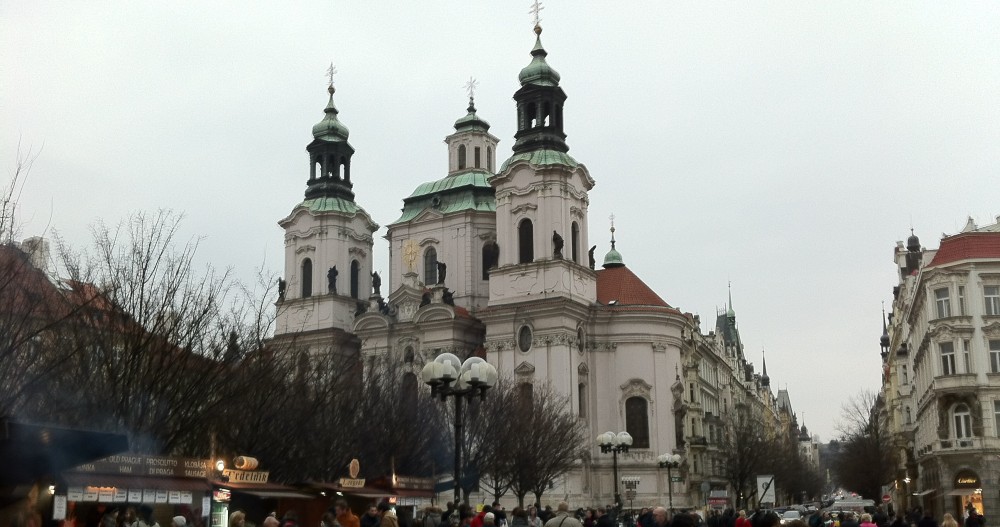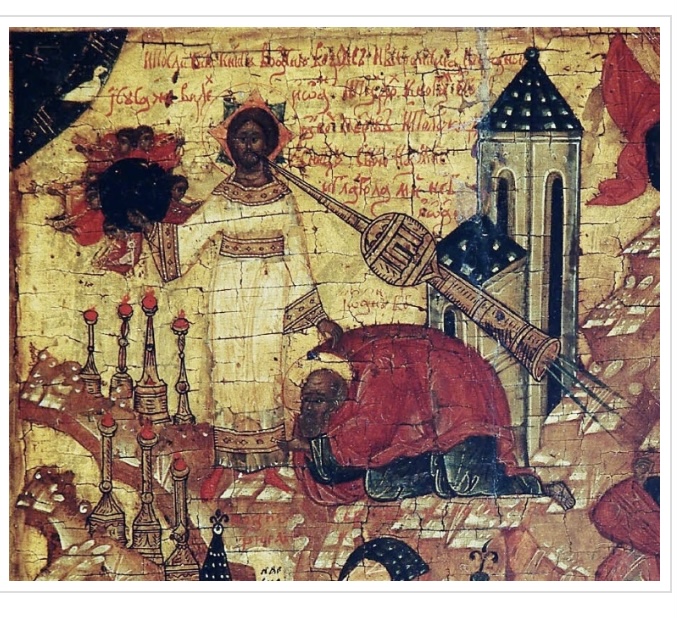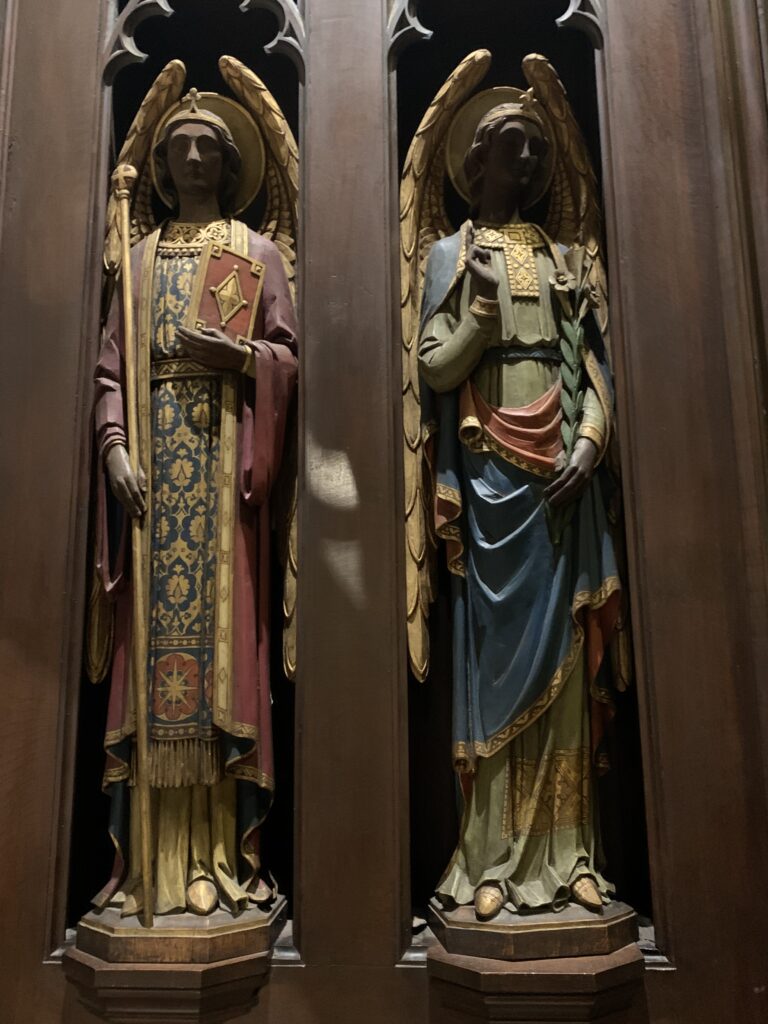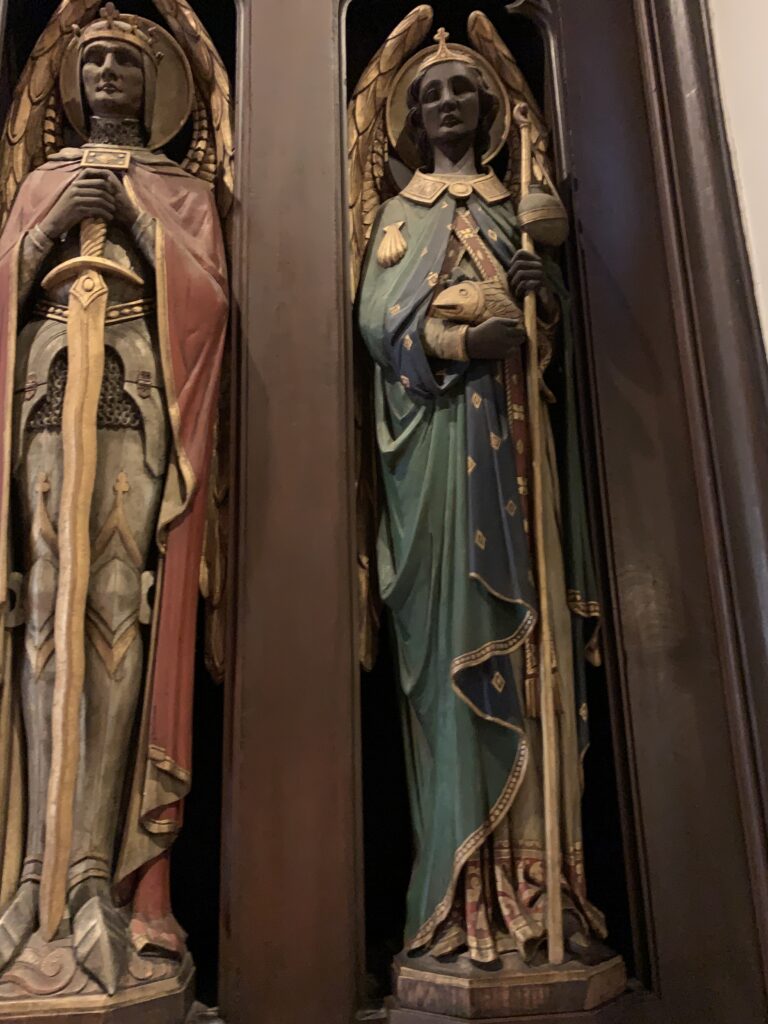

The figure of the Antichrist appears in several places in the New Testament before he appears in the Apocalypse (Book of Revelation). In the first epistle of St. John, we read Children, it is the last hour; and as you have heard that antichrist is coming, so now many antichrists have come; therefore we know that it is the last hour.” (1 John 2:18) The antichrists are those who oppose the apostle’s teaching. They are the heretics (lit. “the choosers”) who choose a different teaching and place themselves in opposition to the Church.
In the 2nd epistle to the Thessalonians, the antichrist is the “man of lawlessness” (2 Thess. 2:3-10) who opposes peace, order, and harmony–both civil and ecclesiastical. The seven-headed, ten-crowned dragon of the Apocalypse is typically identified with this “man of lawlessness,” the Antichrist. The dragon deceives and destroys, confusing and laying waste to the Church and the known world.
St. Paul makes the cryptic remark: “… the mystery of lawlessness is already at work; only he who now restrains it will do so until he is out of the way.” (2 Thess. 2:7) Who restrains the Antichrist? St. Paul seems to presume that his readers know but later readers have had to surmise. Even St. Augustine threw up his hands and exclaimed, “I admit that the meaning of this completely escapes me.” (City of God, Book 20, chapter 19)
St. John Chrysostom considered the Antichrist to be the personification of chaos and destruction. It was the power of Rome (even in her pagan days) that kept complete anarchy and destruction at bay. Chrysostom thought of himself as a “Roman” living in the “New Rome” of the ongoing Roman Empire that continued to constrain the Antichrist. Many early fathers and preachers agreed with him and would probably say that “that which restrains the Antichrist” continued to do so until 1917-1918, when Austro-Hungary and imperial Russia–the last two governments to see themselves as the continuation of the Roman Empire–finally collapsed or were overthrown.
The idea that imperial rule kept the world safe from evil is ancient. In the Old Testament, it seems that the ancient Israelites thought the kings of Israel were the “first line of defense” against the evil angels. (For more about this, see Margaret Barker‘s book, The Last Prophet.)



